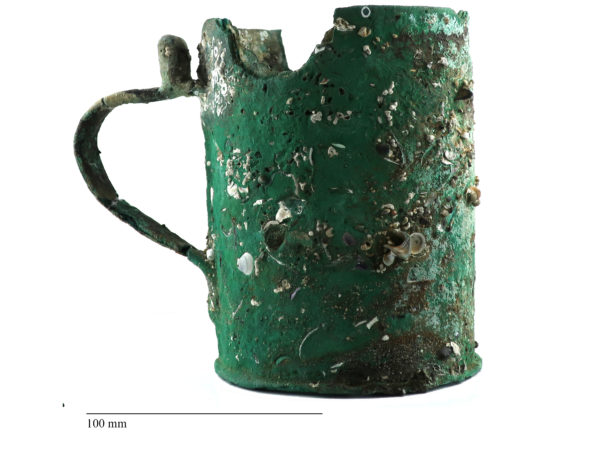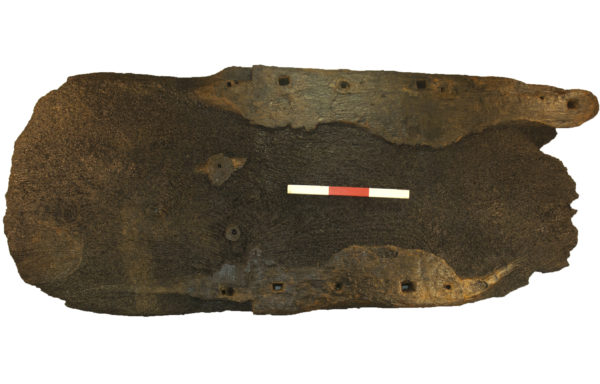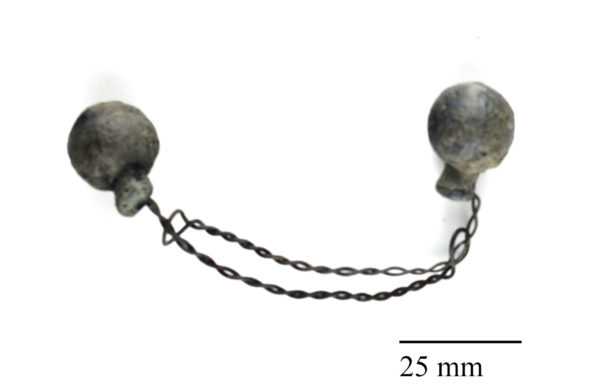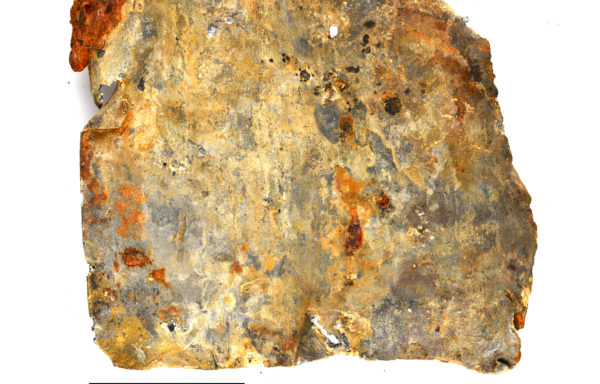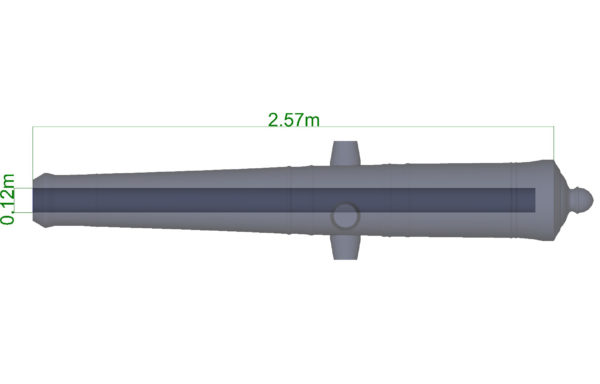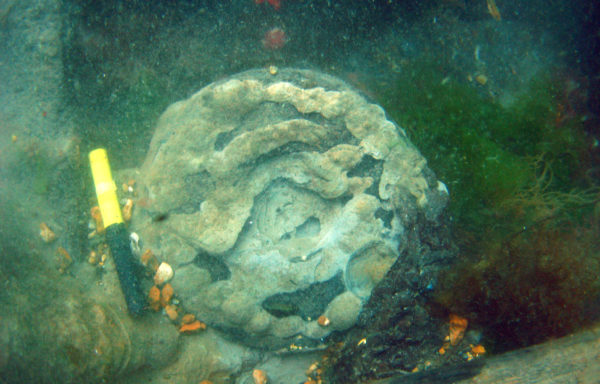Description
A large copper alloy tankard was recovered with an internal diameter of 159mm and height of 205mm giving a volume of c.4 litres. The vessel is made from a highly unstable alloy of copper/lead (95/5%) which would have aided machinability at the time but has not survived well underwater and is very fragmentary. The main side of the vessel survives but the base and handle were both detached and in fragments before conservation.
Two vessels of similar dimensions and made from brass with a copper handle were discovered on the Batavia [BAT589 & 3306] (Green, 1989) and identified as powder measures however their handles are riveted rather than welded on. Two other vessels [BAT688 & 3005] were of similar construction and thought to be powder measures but their identity was “not absolutely certain” (Green, 1989, p. 62)
Due to the surface corrosion on SCW16 no marks have been observed on the vessel to confirm its identity as a powder measure.
A large copper alloy tankard was recovered with an internal diameter of 159mm and height of 205mm giving a volume of c.4 litres. The vessel is made from a highly unstable alloy of copper/lead (95/5%) which would have aided machinability at the time but has not survived well underwater and is very fragmentary. The main side of the vessel survives but the base and handle were both detached and in fragments before conservation.
Two vessels of similar dimensions and made from brass with a copper handle were discovered on the Batavia [BAT589 & 3306] (Green, 1989) and identified as powder measures however their handles are riveted rather than welded on. Two other vessels [BAT688 & 3005] were of similar construction and thought to be powder measures but their identity was “not absolutely certain” (Green, 1989, p. 62)
Due to the surface corrosion on SCW16 no marks have been observed on the vessel to confirm its identity as a powder measure.
